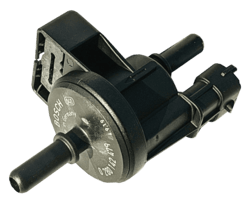Online editing of EVAP firmware is available for cars
Why can disabling EVAP be important for your car?
Calibrating the ecu-file allows you to disable the fuel vapor capture system (evaporative emission control EVAP) for gasoline engines. This is achieved by changing the calibrations (remapping) of the engine control module (ECU) program.
The EVAP system creates additional resistance for fuel vapors, which can reduce engine performance and the efficiency of the vehicle. Disabling this system can improve performance and fuel economy.
Steps for EVAP Off through ECU file editing
- Preparation for the process: Gain access to the car's ECU file using specialized equipment and software, for example, the MMC Flash loader.
- ECU file editing: Using our online MMC Flash service, modify the relevant parameters associated with the EVAP system to disable it.
- Testing and optimization: After making the changes, thoroughly test the car to ensure its normal operation without the EVAP system. If necessary, make additional adjustments to optimize performance and ecological efficiency.
Advantages of disabling the EVAP system
- Increased engine performance and efficiency.
- Improved fuel economy.
- Reduction of environmental pollution by reducing fuel vapor emissions.
Possible DTCs for EVAP system malfunctions
- P0440 – Evaporative Emission System
- P0441 – Evaporative Emission System Incorrect Purge Flow
- P0442 – Evaporative Emission System Leak Detected (small leak)
- P0446 – Evaporative Emission System Vent Control Circuit
- P0450 – Evaporative Emission System Pressure Sensor/Switch
- P0455 – Evaporative Emission System Leak Detected (large leak)
- P0456 – Evaporative Emission System Leak Detected (very small leak)
- P0457 – Evaporative Emission System Leak Detected (fuel cap loose/off)
- P0458 – Evaporative Emission System Purge Control Valve Circuit Low
- P0459 – Evaporative Emission System Purge Control Valve Circuit High
- P0465 – EVAP Purge Flow Sensor Circuit
- P0466 – EVAP Purge Flow Sensor Circuit Range/Performance
- P0467 – EVAP Purge Flow Sensor Circuit Low
- P0468 – EVAP Purge Flow Sensor Circuit High
- P0469 – EVAP Purge Flow Sensor Circuit Intermittent
- P2024 – Evaporative Emissions (EVAP) Fuel Vapor Temperature Sensor Circuit
- P2400 – Evaporative Emission System Leak Detection Pump Control Circuit/Open
- P2418 – Evaporative Emission System Switching Valve Control Circuit / Open
- P2421 – Evaporative Emission System Vent Valve Stuck Open
- P2422 – Evaporative Emission System Vent Valve Stuck Closed















